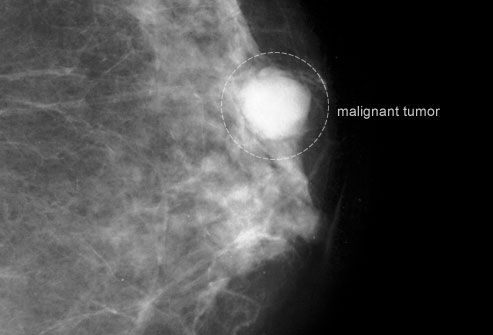Essential Screening Tests Every Woman Needs- cancers, vaccines, Osteoporosis, High BP, Cholesterol, Diabetes, HIV, glaucoma,

Cervical Cancer
T










Why Screening Tests Are Important
Getting the right screening test at the right time is one of the most important things you can do for your health. Screenings find diseases like cancer or diabetes early, before you have symptoms, and when they’re easier to treat. Which test you should have depends on your age and your risk factors. Learn more about the screenings your doctor may recommend for you.
Breast Cancer
Early detection of breast cancer greatly improves your odds for survival. That's because the smaller the cancer is when it's found, the better the chance for a surgical cure. Smaller breast cancers are also less likely to have spread to lymph nodes and other organs such as the lungs and brain. If you're in your 20s or 30s and do not have known breast cancer risk factors, a clinical breast exam by a health professional should be part of your regular health exam once every three years.( 1st pic)
Screening With Mammography
Talk to your doctor about breast cancer screening. The American Cancer Society recommends yearly screening for women at average risk beginning at 40. However, the U.S. Preventive Services Task Force recommends screening mammograms every two years from ages 50 to 74. These low-dose X-rays can detect a lump three years before you can feel it. But a normal mammogram does not completely rule out the possibility of breast cancer.
Cervical Cancer
The cervix is the part of the uterus that extends into the vaginal cavity. Persistent infection with the human papillomavirus (HPV) is the major risk factor for cervical cancer (shown here, magnified). Routine screening can find it early, when it's highly curable. It can also find abnormal precancerous cells on the surface of the cervix so they can be removed before they turn into cancer.
Screening for Cervical Cancer
Doctors use a Pap test to screen for cancer of the cervix. In the office, the doctor collects a sample of cells from your cervix. These are examined in the lab to find precancerous and cancer cells. The screening test should start at age 21. It's very effective in both preventing and finding cervical cancer early enough to cure it.
A Vaccine for Cervical Cancer
The FDA has approved a vaccine -- Gardasil -- for girls and women between the ages of 9 and 26. It confers immunity against four strains of HPV, the virus that is a leading cause of cervical cancer. A second vaccine, Cervarix, received FDA approval in October 2009 for use in girls and women between the ages of 10 and 25. Cervarix targets two strains of HPV. Not all cervical cancers are due to HPV and other strains of HPV can still cause cancer that neither vaccine protects against. So while these vaccines may greatly reduce the number of cervical cancer cases, it’s still important to have routine Pap tests to screen for cancer of the cervix.(2nd pic)
Osteoporosis and Fractured Bones
Osteoporosis is a condition in which bones become weak and fragile. It's caused by bone loss, which accelerates in women after menopause. The first symptom is often a painful bone fracture that can occur with only a minor fall, blow, or even just a twist of the body. It is possible to both prevent and treat osteoporosis, which threatens over half of U.S. adults aged 50 and over, according to the National Osteoporosis Foundation. ( 3rd picture shown)
Osteoporosis Screening Tests
A test called Dual Energy X-ray Absorptiometry (DXA) can measure bone mineral density and detect osteoporosis before fractures occur. It can also help predict the risk of future bone fractures. Bone density testing is recommended for all women 65 years of age and older. It's also recommended for middle-aged women younger than 65 who have risk factors for osteoporosis.
Skin Cancer
The most dangerous form of skin cancer is melanoma (shown here). It's a malignancy that affects the cells that produce pigment in the skin. Some people may have a genetic risk factor for melanoma. And the risk increases with overexposure to the sun and sunburn. Early treatment of skin cancer can be effective. And melanomas that are detected at a thinner stage can be treated more successfully than thick ones that have grown deeper into the skin. Basal cell and squamous cell skin cancers are common non-melanoma skin cancers. ( 4th pic.)
Screening for Skin Cancer
The American Cancer Society and the American Academy of Dermatology recommend regular skin self-exams to check for any changes in marks on your skin including shape, color, and size. A skin exam by a dermatologist or other health professional should be part of a routine cancer checkup.(5th pic.)
High Blood Pressure (Hypertension)
Your risk for high blood pressure increases with age. It's also related to your weight and certain lifestyle habits. High blood pressure can lead to severe complications without any prior symptoms, including an aneurysm. But high blood pressure can be treated. When it is, you reduce your risk of complications such as heart disease, stroke, and kidney failure. Finding out you have high blood pressure and then working with your doctor to manage it can pay huge health dividends. ( 6th pic.)
Screening for High Blood Pressure
Blood pressure is expressed as two numbers. The first (systolic) is the pressure of your blood against your artery walls when the heart beats. The second (diastolic) is the pressure between beats. Normal adult blood pressure is less than 120/80. Blood pressure that is 140/90 or higher is considered high blood pressure. A reading between those two is considered prehypertension. How often blood pressure should be checked depends on how high it is and what other risk factors you have.
Cholesterol Levels
A high level of LDL cholesterol is a major factor that increases the risk of developing heart disease and atherosclerosis -- hardening and narrowing of the arteries -- which is caused by plaque (seen here in orange) building up inside your arteries. It can progress without symptoms for many years. Over time it can lead to heart attack and stroke. Other atherosclerosis risk factors are high blood pressure, diabetes, and smoking. Lifestyle changes and medications can lower your risk of cardiovascular disease. ( 7th pic.)
Determining Cholesterol Levels
Doctors screen for problems with cholesterol by using a fasting blood lipid panel. That's a blood test that tells you your levels of total cholesterol, LDL "bad" cholesterol, HDL "good" cholesterol, and triglyceride (blood fat). Management decisions are based on the results. For adults 20 years or older, you should have a new panel done at least every five years.
Type 2 Diabetes
One-third of the people in the U.S. with diabetes don't know they have it. The sixth leading cause of death in the U.S., diabetes can lead to a vast array of complications such as heart disease and stroke, kidney disease, blindness from damage to the blood vessels of the retina (shown here), and nerve damage. But, especially when found early, diabetes can be controlled and complications avoided with diet, exercise, and weight loss.
( 8th pic.)
Screening for Type 2 Diabetes
A test known as fasting plasma glucose is most often used to screen for diabetes and prediabetes. Blood is drawn after you've fasted at least eight hours and used to determine your blood sugar level. A level of 100 to 125 indicates prediabetes. And 126 or higher indicates diabetes. If you're healthy and have a normal risk of diabetes, you should have the test every three years starting at age 45. If you have a higher risk, you may start testing earlier and more frequently.
Human Immunodeficiency Virus (HIV)
HIV is the virus that causes AIDS. It's in the blood and other body secretions of infected individuals, even when there are no symptoms. It spreads from one person to another when these secretions coming in contact with the vagina, anal area, mouth, eyes, or a break in the skin. There is still no cure or vaccine. But, theoretically, early treatment with anti-HIV medications may help the body's immune system fight the virus.
( 9th pic.)
HIV Screening Tests
HIV-infected individuals can remain symptom free for many years. The only way to know they are infected is with a series of blood tests. The first test is called ELISA or EIA. It looks for antibodies to HIV in the blood. It’s possible not to be infected and still show positive on the test. So a second test called a Western blot assay is done for confirmation. If you are infected, you could still have a negative test result. Repeat testing is recommended. If you think you may have been exposed to HIV, ask your doctor about the tests.
Preventing the Spread of HIV
Most newly infected individuals test positive by two months after infection. But up to 5% are still negative after six months. Abstinence or using latex barriers such as a condom or a dental dam is necessary to avoid potential infection of HIV and other sexually transmitted infections. If you have HIV and are pregnant, talk with your doctor about what needs to be done to reduce the risk of HIV infection in your unborn child.
Colorectal Cancer
Colorectal cancer is the second most common cause of death from cancer overall, and ranks third for women after lung and breast cancer. The majority of colon cancers develop from colon polyps that are growths on the inner surface of the colon. After cancer develops it can invade or spread to other parts of the body. The way to prevent colon cancer is to remove colon polyps before they turn cancerous. ( 10th pic.)
Screening for Colorectal Cancer
A colonoscopy is a common screening test for colorectal cancer. A doctor views the entire colon using a flexible tube and a camera. Polyps can be removed at the time of the test. A similar alternative is a flexible sigmoidoscopy that examines only the lower part of the colon. If you are at average risk, screening usually starts at age 50. ( 11th pic.)
Glaucoma
Glaucoma is a condition that can result in blindness due to damage to the optic nerve. Primary open angle glaucoma is the most common type. This glaucoma often produces no symptoms until it is too late and vision loss has begun. There is good evidence that treating elevated eye pressure in glaucoma can prevent blindness. ( 12th pic.)
Glaucoma Screening
How often you should have an eye exam that includes measuring the pressure inside the eye depends on your age and risk factors. African-Americans, people older than age 60, family history of glaucoma, personal history of eye injury, and steroid use are risk factors. For healthy individuals without increased risk, routine screening every two to four years is recommended for people under age 40. For those between 40 to 54 years, testing should be done every one to three years. From age 55 to 64, testing should be done every one to two years, and for those over 65, every six to 12 months.
Importance of Health Screening
Being proactive and discussing screening tests with your doctor makes good health sense. Some tests, such as a Pap test or breast exam should be a routine part of every woman's health care. Other tests become more or less important based on your risks. Proper screening won't always prevent a disease. But it can find a disease early enough to give you the best chance of overcoming it.
Labels: cancer- breast, cervical, Cholesterol, colorectal, diabetes, Essential Screening Tests Every Woman Needs- cancers, glaucoma, High BP, HIV, Mammography, Osteoporosis, skin, vaccines


0 Comments:
Post a Comment
<< Home